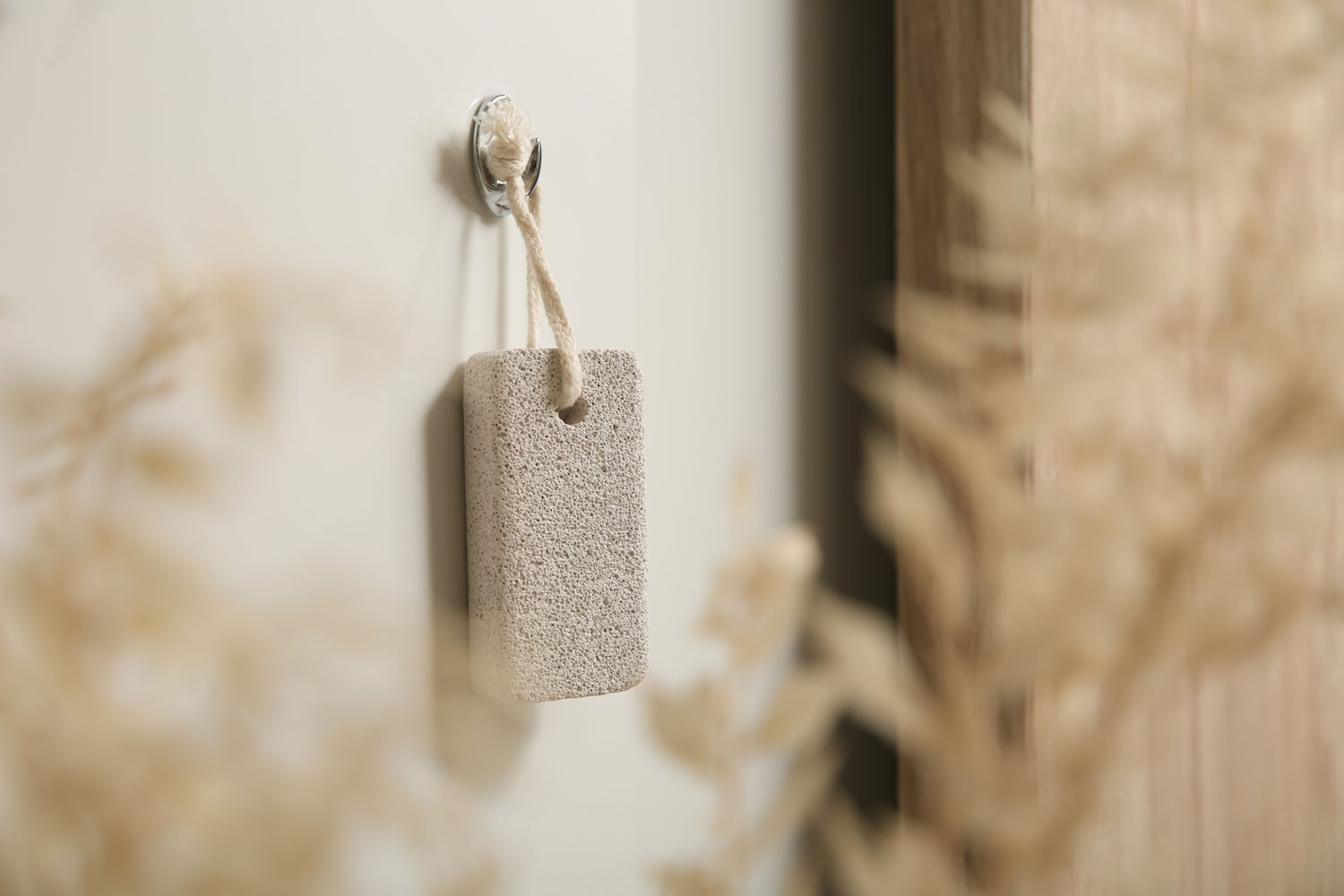Pumice Stone: Your Home’s Secret Weapon
Feb 2, 2025

Pumice stones are incredibly versatile for home use due to their abrasive yet gentle texture, which comes from their volcanic origins. Here’s a detailed guide on how to use them effectively for various household tasks:
1. Removing Rust from Toilet Bowls
- How to Do It: Wet the pumice stone with water to soften it slightly and reduce the risk of scratching porcelain. Gently scrub the rust-stained areas in a circular motion. The stone will gradually wear away the rust without harsh chemicals.
-
Tips: Keep the area wet while working to minimize friction. Rinse frequently to check your progress and avoid over-scrubbing, which could damage the surface if done too aggressively.
-
Why It Works: Pumice is hard enough to tackle mineral deposits like rust but soft enough to avoid deep scratches on ceramic.
2. Cleaning Burnt-On Food from Ovens
-
How to Do It: Dampen the pumice stone and apply it to the cooled oven interior where food is stuck. Use light pressure in a back-and-forth motion to lift the grime. Wipe away residue with a damp cloth afterward.
-
Tips: Test a small, inconspicuous spot first to ensure it won’t scratch your oven’s finish (especially on coated surfaces). Avoid using it on glass oven doors, as they’re more prone to scratching.
-
Why It Works: The stone’s abrasiveness cuts through baked-on grease and carbonized food without the need for toxic oven cleaners.
3. Removing Pet Hair from Fabric Furniture
-
How to Do It: Lightly dampen the pumice stone (just enough to avoid dust) and gently rub it over upholstery in one direction. The stone’s rough surface will lift pet hair into clumps you can easily pick off or vacuum up.
-
Tips: Use a soft touch to avoid pilling or damaging delicate fabrics like silk or thin cotton. Always test on a hidden area first.
-
Why It Works: The textured surface grabs loose hair that lint rollers or brushes might miss, making it a great alternative for stubborn pet hair.
4. Bonus Uses
- Grill Grates: Scrub off grease and charred bits from metal grill grates with a wet pumice stone. It’s a natural way to refresh your BBQ setup.
-
Tile Grout: Gently scrub stained grout lines to remove dirt or mildew. Pair with a little water or mild soap for tougher spots.
-
Garden Tools: Remove sap or rust from metal tools by rubbing them with a damp pumice stone.
General Tips for Using Pumice Stones at Home
-
Safety First: Wear gloves if handling rough or dirty surfaces to protect your hands. Avoid inhaling dust by keeping the stone damp.
-
Surface Check: Pumice is abrasive, so it’s best for hardy materials like porcelain, metal, or thick fabrics. Avoid delicate surfaces like polished wood, glass, or nonstick coatings unless you’re certain it won’t scratch.
-
Maintenance: Rinse the stone after each use and let it air dry. Over time, it’ll wear down—that’s normal! Replace it when it gets too small to grip comfortably.
Why Keep Them Separate?
- Hygiene: A pumice stone used in the toilet will come into contact with bacteria, germs, and possibly traces of waste or cleaning chemicals. You don’t want any of that transferring to your oven, where food is prepared.
- Residue: Toilets often have rust, limescale, or mineral deposits, while ovens have grease and food particles. Cross-contamination could leave unwanted grime or odors on either surface.
- Wear and Tear: Each task wears the stone differently—toilets might smooth it out faster due to wet conditions, while ovens could load it with greasy buildup. Keeping them separate ensures each stone stays effective for its job.
How to Manage It
-
Label Them: Mark your pumice stones to avoid mix-ups. You could use a permanent marker (e.g., “Toilet” or “Oven”) or tie a small colored string or rubber band around each one.
-
Store Separately: Keep the toilet pumice in the bathroom (maybe in a small container or bag) and the oven pumice in the kitchen. This reduces the chance of grabbing the wrong one.
-
Clean After Use: Rinse each stone thoroughly with water after use to remove debris. For the toilet stone, you might even soak it in a mild bleach or vinegar solution periodically to sanitize it—just rinse well and let it dry afterward.
Want to take the stress out of home maintenance? Become a Goodsmith member today and let us handle the rest!
